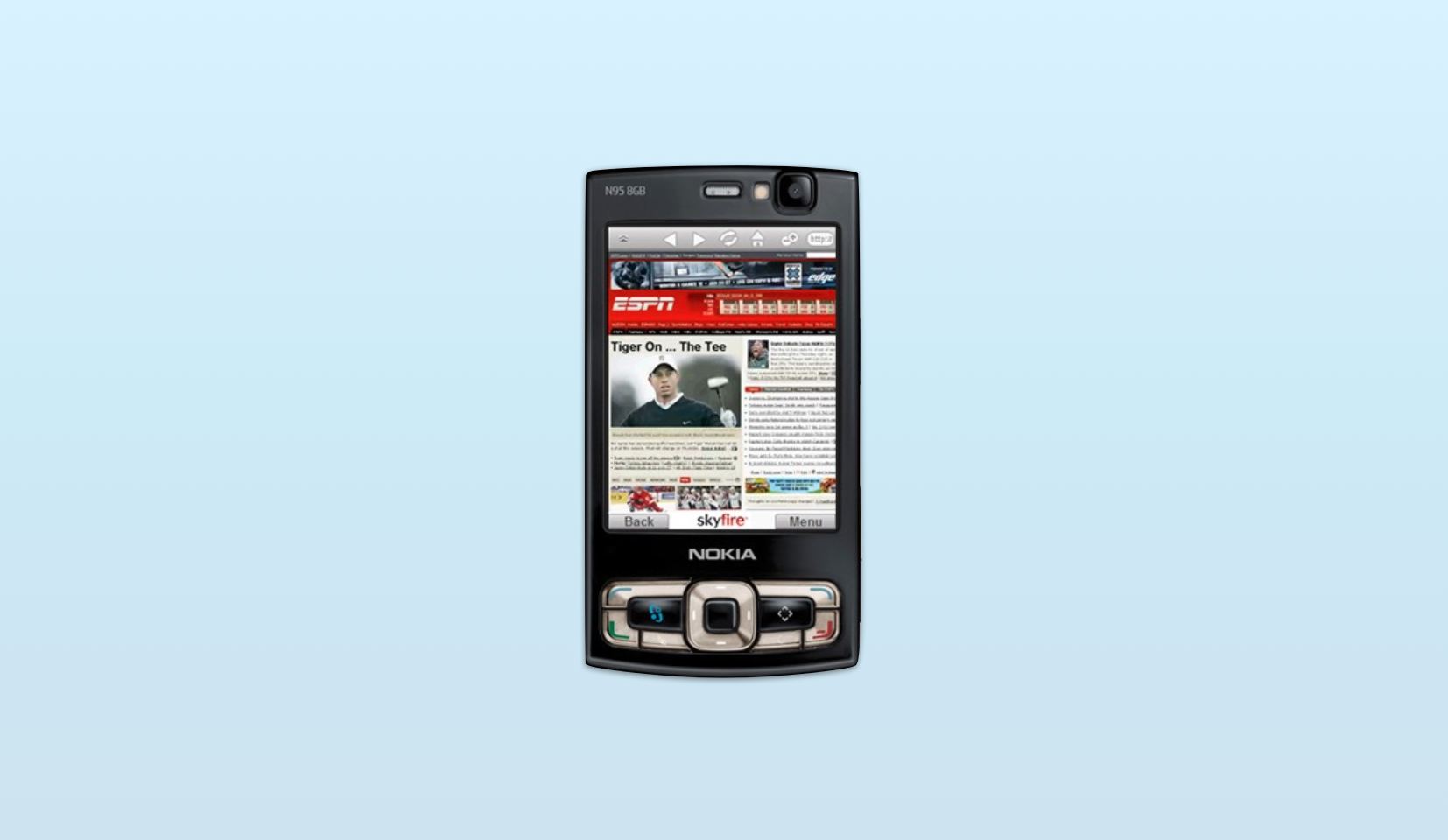Be Better, Not Smaller
Most AI products are making a familiar mistake

Nearly 20 years ago, in the pre-iPhone era, we were asked by a major mobile carrier to better position cellular internet.
At the time, no one used data services on their phones. Phones that did connect to the web, didn’t give you a full browser. You connected to the WAP (Yes, that’s what it was called. Yes, I feel ancient).
The WAP was like reading the internet by peering through a keyhole. Content – mostly news, weather, stock prices, and sports scores – was presented as a list, in a mostly text format.
Only recently had devices arrived which could visit webpages directly. And this is how they worked:
This aforementioned carrier had recently launched a few of these new phones and, unsurprisingly, no one was using the internet features. So they reached out to us, a small branding and positioning agency, for ideas.
After trawling case studies for a few days, I arrived at a concise recommendation: “Don’t make something smaller when you can make something better.”
When given a new technology, product designers regularly repeat this mistake. As we get better at production, big expensive tech gets smaller and cheaper, letting us bring previously out-of-reach experiences to the masses. And, initially, this is what we do. Sometimes with significant success!
But it’s not until we figure out how to improve behaviors that already exist do we truly crack open the market.
For instance:
- Personal Computers: The first few generations of personal computers let people use mainframe interfaces and software at their house. We shipped smaller mainframes. Then the Macintosh came along and delivered a better desktop.
- Handheld Computers: The Apple Newton and Windows CE machines tripped over themselves by trying to bring the PC experience to the palm of your hand, while PalmPilot focused on delivering a better pen and paper.
- Home Game Consoles: Atari and others fueled an initial gaming growth spurt by bringing arcade style, round-based games to the home TV, but it wasn’t long lived. Nintendo then shipped longer quests with Mario and Zelda, delivering a better game.
And that’s how it went with the first generation of mobile internet. Devices like the Treo, Nokia N95 and Danger Hiptop slapped smaller browsers on their phones and called it a day. A smaller Internet in your pocket. Only when the iPhone landed did we realized what this tech could enable.
A better communicator. A better map. A better music player. A better phone.
Apple started with behaviors people actually perform, on-the-go, and asked how they could be better with the internet.
And they’ve done it again with AI.
Watching WWDC a couple weeks ago, I saw the familiar strategy. John Gruber encapsulated it nicely:
What Apple unveiled last week with Apple Intelligence wasn’t so much new products, but new features — a slew of them — for existing products, powered by generative AI.
Safari? Better now, with generative AI page summaries. Messages? More fun, with Genmoji. Notes and Mail and Pages (and any other app that uses the system text frameworks)? Better now, with proofreading and rewriting tools built-in. Photos? Even better recommendations for memories, and automatic categorization of photos into smart collections. Siri? That frustrating, dumb-as-a-rock son of a bitch, Siri? Maybe, actually, pretty useful and kind of smart now. These aren’t new apps or new products. They’re the most used, most important apps Apple makes, the core apps that define the Apple platforms ecosystem, and Apple is using generative AI to make them better and more useful — without, in any way, rendering them unfamiliar.
Apple looked at what people do with their phones and asked how they could improve these functions with AI. That’s it!
I think about the “smaller vs. better” framing fairly regularly. Once you put your finger on it, you see it everywhere. But with AI, I’d decided it didn’t fit. “It’s too novel of a technology,” I thought, “Our initial applications are radically new. They’re not smaller versions of previously out-of-reach applications.”
But Apple’s Intelligence launch spurred me to reconsider. I realized the initial wave of LLM-powered products, mostly chatbots and generators, are in fact ‘smaller’ versions of existing services.
These products are smaller people.
They’re smaller, cheaper illustrators, editors, writers, and researchers. And like the examples we cited above – the smaller mainframes, PCs, arcade games, and web browsers – they’re all inferior and hobbled. Yes, we are seeing significant adoption of these smaller people by early adopters who will put up with the rough edges, but the signals we have indicate consumer adoption has flatlined.
To unlock the mass market, truly, we need to start with existing mass behaviors and figure out how to improve them with AI.
Now there’s a coda to this: sometimes we revisit “smaller” after the “better” phase, after the surrounding enabling technology and content catch-up and enable the “smaller” products to work with less compromises. Mobile web browsers sucked with 2-inch screens, T9 typing, non-responsive webpages, and 3G. But add good touch screens the size of your hand and mobile-ready content? After a dozen years of mobile web improvements, mobile traffic eclipsed desktop traffic.
But getting to a place where the “smaller” product actually delivers is a complex, collaborative, and long journey. Perhaps AI models will get good enough and the surrounding infrastructure will meet the chatbots at their vision.
But even if this happens, it will be awhile until these smaller, synthetic humans get to the point where the masses are ready to create new behaviors with them. Until that happens, we need better solutions powered by AI to see us through that wait.
The fact that Anthropic and OpenAI have been aggressively hiring consumer-focused product designers and leaders1 leads me to believe they can’t afford to just wait.